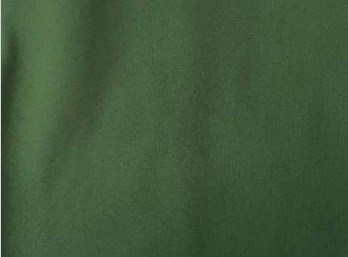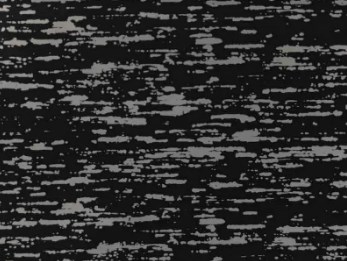Understanding the Science Behind Tear Resistance
Modern climbing demands fabrics that can withstand extreme conditions while maintaining lightweight performance. The development of tear resistance climbing jackets fabrics represents a significant advancement in textile engineering, combining specialized weaving techniques with advanced polymer science. These fabrics are designed to resist punctures, abrasion, and tearing while maintaining flexibility and breathability. The fundamental principle involves creating a fabric structure that distributes stress away from initial tear points, preventing small damages from becoming catastrophic failures. This is particularly crucial in climbing scenarios where a jacket's integrity can directly impact safety during challenging ascents and unexpected weather conditions.
- Molecular Structure: High-tenacity fibers with oriented polymer chains provide exceptional strength-to-weight ratios
- Weave Patterns: Specialized constructions like ripstop create microscopic reinforcement grids
- Surface Treatments: Chemical coatings enhance durability without compromising breathability
- Testing Standards: Fabrics undergo rigorous testing including ASTM D5587 tear resistance tests
How Ripstop Weave Technology Prevents Fabric Failure
The revolutionary ripstop weaving technique has transformed outdoor gear durability. This method incorporates thicker reinforcement threads at regular intervals, creating a grid pattern that contains potential tears within small squares. When stress is applied, the reinforced threads bear the load, preventing tears from propagating across the fabric. This technology is particularly effective in high-tenacity nylon ripstop climbing jacket fabric, where the combination of material strength and intelligent design creates exceptionally durable protection.
- Grid Density: Varies from 3mm to 10mm spacing based on intended use
- Thread Thickness: Reinforcement threads are typically 2-3 times thicker than base fibers
- Weave Variations: Includes square, hexagonal, and diamond patterns for different stress distributions
The Role of Denier Ratings in Climbing Gear Durability
Denier measurement provides crucial information about fabric density and potential durability. Higher denier numbers indicate thicker yarns and generally greater resistance to abrasion, though this must be balanced against weight considerations. For climbing applications, fabrics typically range from 20D for ultralight shells to 100D for high-wear areas, with lightweight tear-resistant climbing shell material optimally balancing around 30-50D.
| Denier Rating | Weight Classification | Best Applications | Tear Strength |
| 15D-30D | Ultralight | Alpine climbing, fast packing | Moderate |
| 30D-50D | Lightweight | Technical rock climbing | Good |
| 50D-75D | Mid-weight | Multi-pitch climbing, ice climbing | Excellent |
| 75D-100D+ | Expedition weight | Mixed climbing, expedition use | Superior |
5 Key Long-Tail Keywords for Tear-Resistant Climbing Fabrics
The specialized nature of climbing textiles has generated specific search terms that reflect user needs and technical requirements. Understanding these keywords helps manufacturers like Green Textile & Galaxy Textile Co., Ltd. develop products that precisely meet market demands. Our research and development team continuously monitors these search patterns to inform our fabric innovation strategies, ensuring we remain at the forefront of tear resistance climbing jackets fabrics technology.

- high-tenacity nylon ripstop climbing jacket fabric
- lightweight tear-resistant climbing shell material
- best abrasion-resistant fabric for rock climbing jackets
- waterproof tear-proof climbing jacket textiles
- durable climbing jacket fabric with reinforced panels
High-Tenacity Nylon Ripstop: The Gold Standard
Nylon ripstop has established itself as the benchmark for climbing jacket durability. The combination of nylon's inherent strength and the ripstop weaving technique creates fabrics that withstand rigorous use while maintaining minimal weight. At Green Textile & Galaxy Textile Co., Ltd., our high-tenacity nylon ripstop climbing jacket fabric undergoes specialized heat-setting processes that enhance dimensional stability and tear resistance, making it ideal for technical climbing applications where every gram counts but durability cannot be compromised.
- Tensile Strength: Typically 400-600 Newtons force resistance
- Elongation Properties: 25-35% stretch capacity for mobility
- Abrasion Resistance: Withstands 50,000+ Martindale cycles
Lightweight Tear-Resistant Shell Materials Explained
The quest for lighter materials without sacrificing protection has driven innovation in lightweight tear-resistant climbing shell material development. Advanced micro-denier fibers and nanoscale coatings enable fabrics that weigh less than 100 GSM while providing tear strength comparable to much heavier traditional materials. Our production facilities utilize precision weaving technology to create these advanced textiles, ensuring consistent quality across every meter of fabric produced.
| Material Type | Weight Range (GSM) | Tear Strength (Newtons) | Breathability Rating |
| Micro Ripstop Nylon | 85-100 GSM | 45-55N | 15,000+g/m²/24hr |
| Ultralight Polyester | 75-90 GSM | 35-45N | 20,000+g/m²/24hr |
| Hybrid Composite | 95-110 GSM | 50-65N | 18,000+g/m²/24hr |
Choosing the Best Abrasion-Resistant Fabric
Selecting the best abrasion-resistant fabric for rock climbing jackets requires understanding specific climbing disciplines and environmental conditions. Different rock types, climbing styles, and weather conditions demand varied fabric characteristics. Granite and sandstone require exceptional abrasion resistance, while ice climbing prioritizes waterproofness and cold-weather performance. Our technical team at Green Textile evaluates each fabric against 12 performance criteria to ensure optimal selection for specific applications.
- Rock-Specific Requirements: Varying abrasion levels for different geological formations
- Movement Patterns: Fabric must accommodate dynamic climbing movements
- Environmental Factors: UV resistance, moisture management, temperature tolerance
Technical Comparison: Tear Resistance Across Fabric Types
Understanding the performance characteristics of different fabric types is essential for making informed material selections. Each textile offers unique advantages and limitations in tear resistance, weight, and environmental performance. At our Wujiang Galaxy Textile production facility, we conduct continuous comparative testing to push the boundaries of what's possible in tear resistance climbing jackets fabrics, leveraging our 280 hydraulic looms to produce innovative textile solutions.
- Laboratory Testing: Comprehensive evaluation under controlled conditions
- Field Testing: Real-world performance assessment by professional climbers
- Accelerated Aging: Simulating years of use in compressed timeframes
Nylon vs. Polyester: Strength Showdown
The choice between nylon and polyester for climbing jackets involves careful consideration of their respective strengths and limitations. Nylon generally offers superior tear strength and abrasion resistance, while polyester provides better UV resistance and moisture management. Our research indicates that high-tenacity nylon ripstop climbing jacket fabric typically outperforms polyester equivalents in pure tear resistance tests, though advanced polyester blends are closing the gap.
| Performance Metric | Nylon 6,6 | Polyester PET | Nylon-Polyester Blend |
| Tear Strength | Excellent | Good | Very Good |
| UV Resistance | Good | Excellent | Very Good |
| Moisture Absorption | 4-4.5% | 0.4-0.8% | 2-3% |
| Abrasion Resistance | Excellent | Very Good | Excellent |
Weight-to-Strength Ratios in Climbing Textiles
The weight-to-strength ratio is a critical metric for evaluating climbing jacket fabrics. Advanced materials achieve remarkable strength while minimizing weight, allowing climbers to carry less burden during ascents. Our development of lightweight tear-resistant climbing shell material focuses on optimizing this ratio through precision engineering and advanced fiber technology.
- Advanced Polymers: Specially formulated resins enhance fiber strength
- Weave Optimization: Computer-modeled patterns maximize strength efficiency
- Surface Treatments: Nanocoatings add protection without significant weight
Future Innovations in Climbing Jacket Materials
The evolution of climbing jacket fabrics continues at an accelerated pace, with several promising technologies emerging. Smart textiles, sustainable materials, and advanced composites represent the next frontier in tear resistance climbing jackets fabrics development. At Green Textile & Galaxy Textile Co., Ltd., our R&D department is actively exploring these avenues, leveraging our 16 million meter annual production capacity to bring innovative solutions to market.
- Self-Healing Polymers: Materials that automatically repair minor tears and punctures
- Phase-Change Materials: Intelligent temperature regulation integrated into fabric structure
- Biodegradable Composites: High-performance materials with reduced environmental impact
Sustainable Alternatives Without Compromising Strength
Environmental responsibility is becoming increasingly important in outdoor gear manufacturing. The development of recycled and bio-based materials that match the performance of traditional synthetics represents a significant challenge and opportunity. Our commitment to sustainability drives innovation in creating durable climbing jacket fabric with reinforced panels using recycled content and environmentally conscious manufacturing processes.
- Recycled Nylon: Post-consumer waste transformed into high-performance fibers
- Bio-Polymers: Plant-based alternatives to petroleum-derived materials
- Water-Free Dyeing: Coloration processes that eliminate water pollution
FAQ
How does ripstop fabric actually prevent tears from spreading?
Ripstop fabric incorporates thicker reinforcement threads woven in a crosshatch pattern, typically at 5-8mm intervals. When a tear attempts to propagate, it reaches these reinforced threads which are 2-3 times stronger than the base fabric. The increased thickness and strength of these threads act as barriers, containing the damage within a single square of the grid pattern. This design principle is particularly effective in high-tenacity nylon ripstop climbing jacket fabric, where the combination of material strength and intelligent patterning creates multiple fail-safes against catastrophic fabric failure.

What is the difference between tear strength and abrasion resistance in climbing fabrics?
Tear strength measures a fabric's resistance to propagating existing cuts or punctures, while abrasion resistance refers to the material's ability to withstand surface wear from repeated friction. For best abrasion-resistant fabric for rock climbing jackets, both properties are crucial but serve different purposes. Tear strength prevents small damages from becoming large ones during rock snags, while abrasion resistance maintains fabric integrity against constant rubbing against rock surfaces. Laboratory testing measures these properties differently, with tear strength using Elmendorf or trapezoid tests and abrasion resistance employing Martindale or Wyzenbeek methods.
Can waterproof fabrics still be highly tear-resistant?
Absolutely. Modern waterproof tear-proof climbing jacket textiles achieve both properties through advanced lamination techniques and fabric engineering. The key lies in bonding waterproof membranes to durable face fabrics in a way that complements rather than compromises tear resistance. High-frequency welding and adhesive technologies create unified structures where the waterproof layer contributes to overall fabric strength. Additionally, many waterproof coatings now include tear-resistant additives that enhance durability while maintaining hydrostatic pressure ratings of 20,000mm or higher.
How long should a quality tear-resistant climbing jacket last with regular use?
The lifespan of a climbing jacket depends on usage frequency, climbing discipline, and maintenance practices. A high-quality jacket using premium tear resistance climbing jackets fabrics should provide reliable performance for 3-5 years of regular weekend use, or 1-2 years of professional guiding service. Key factors affecting longevity include UV exposure, frequency of abrasion against rock, and proper cleaning procedures. Reinforced panels in high-wear areas can extend this lifespan significantly, which is why durable climbing jacket fabric with reinforced panels represents such excellent value for serious climbers.
Are there lightweight options that don't sacrifice tear protection?
Yes, advancements in textile technology have produced remarkable lightweight tear-resistant climbing shell material that challenges traditional weight-strength trade-offs. Micro-denier fibers, advanced weaving patterns, and strategic reinforcement allow fabrics weighing under 100 GSM to achieve tear strengths previously only possible with much heavier materials. These innovations include corkscrew yarn constructions that distribute stress more efficiently and nanofiber coatings that add protection without measurable weight increase. The current generation of ultralight climbing jackets often exceeds the performance of heavier jackets from just five years ago.

 English
English 中文简体
中文简体





.png)


